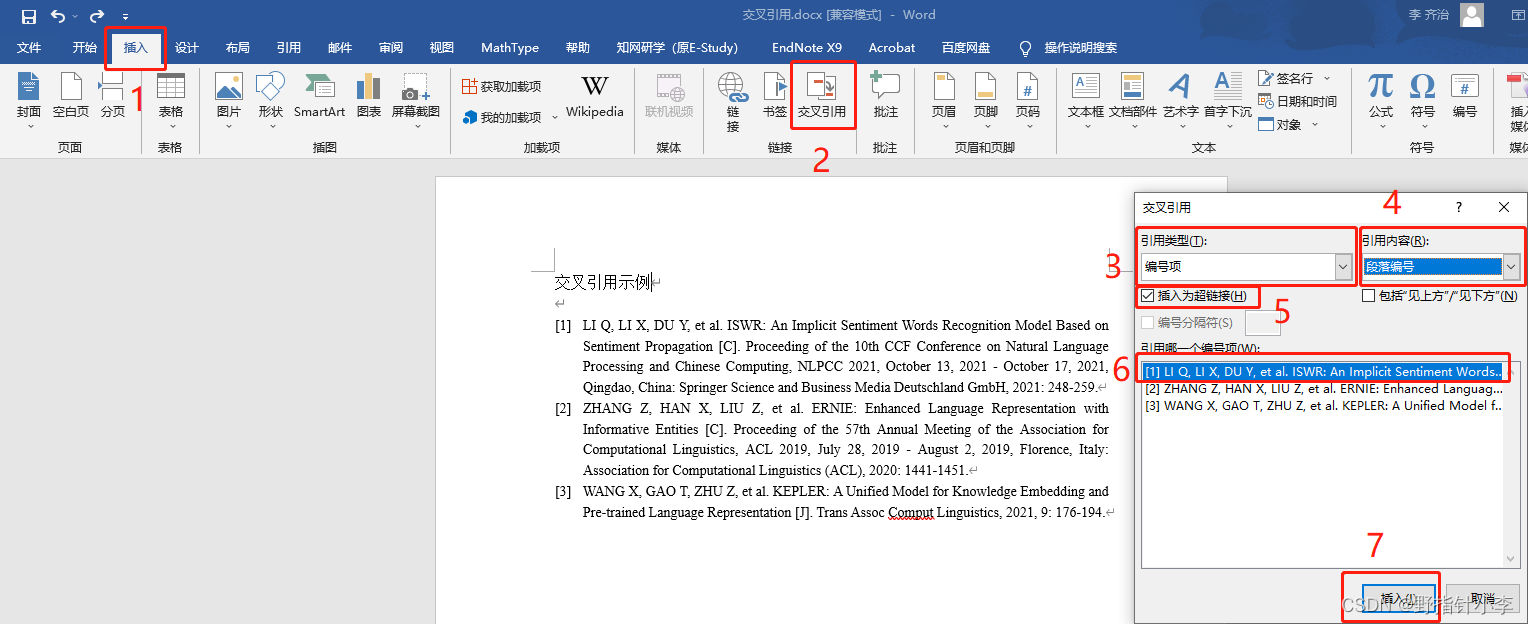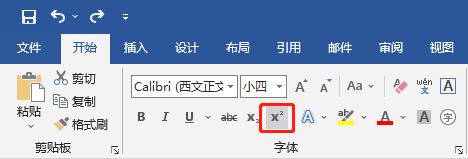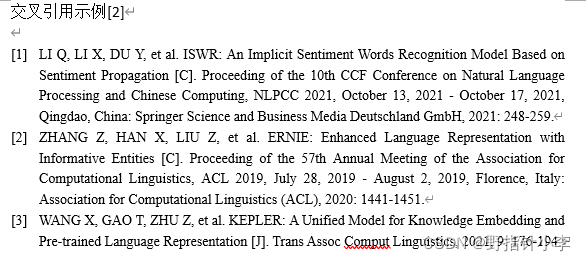If you know how to cross-reference, you can jump directly to Section 2;
if you know how to define the numbering format, but cannot cross-reference, you can jump directly to Section 1.2.
Table of contents
1. Cross-reference
Cross-references can only refer to ordered lists, so we need to define an ordered list of references first.
1.1 Define an ordered list
If you don't have a friend with an ordered list of references (ie [x]), first select the down arrow next to the button in the red box in the figure below to select 定义新编号格式.

When defining a new numbering format, 编号格式change it to the figure below. Click OK to add the numbering format of the reference. You can select the numbering format in the red box in the figure above.

1.2 How to cross-reference
After we add the numbering format using the above method, we place the cursor at the position where the reference needs to be inserted, and then perform the following steps:
- Click to insert;
- Click on Cross Reference;
- Check
引用类型if编号项; - Check
引用内容if段落编号; - Check
插入为超链接whether it is checked (if it is checked, put the mouse on the insertion position, hold downctrland click the left mouse button to jump directly); - Select the reference to be inserted;
- Click Insert.

(The first paper here is my debut [Manual Dog Head], and the second and third papers are my favorite two papers [Manual Dog Head])
If you need to superscript, select the added reference and click the button as shown below (shortcut key ctrl + shift + +, the second one here +is in the row of numbers 加号).

1.3 Why cross-referencing
The biggest advantage of cross-reference is that when we change the order of references, we don't need to manually adjust the serial number in the article . For example, in the following example, we first cited the literature [2].

But we inserted another reference between document [1] and document [2], then [2] previously cited in the article was abandoned and became [3].

The most primitive approach is that we manually delete the previous [2] and change it to [3]. But if we use cross-references, then there is no such trouble, we only need to do the following steps:
- Select the part we need to change (here I recommend selecting the full text. If you change too many references, it may cause the update to be incomplete);
- Right-click on the selected part;
- Just click Update Domain.

(Because I couldn't take a screenshot at this stage, I took it with my mobile phone)
2. Use commas etc. after cross-referencing multiple references
When we may need to cite multiple references for a certain sentence, if we do not deal with it, it will become as follows.

However, we found that other people's papers are all beautiful and concise like [1, 2, 3]or [1-3], so we also need to do this kind of operation.
2.1 Two references
If you want to operate on two references, I will take the comma as an example and take the following steps:
-
Insert the references we need by cross-referencing;
-
Select the inserted reference, right-click and select
切换域代码;

-
Add at the end of the first curly brace
\#"[0", add the second curly brace at the end\#"0]"(single quotes cannot be used here);

-
Select the two curly braces, right-click, and click again
更新域, and then it will become[xy](here x and y represent two different references);

-
Just
[xy]add a comma to become[x, y].

2.2 Multiple references
If you want to operate on multiple references, the only difference from the previous section is that 步骤3. Suppose we have 4 references. After switching to field codes, we also add at the end of the first curly brace and \#"[0"at the end of the last curly brace \#"0]". The difference is that for the middle curly brace, after each To be added \#"0".
